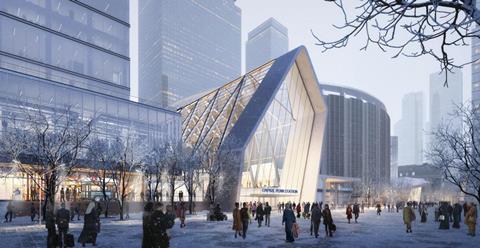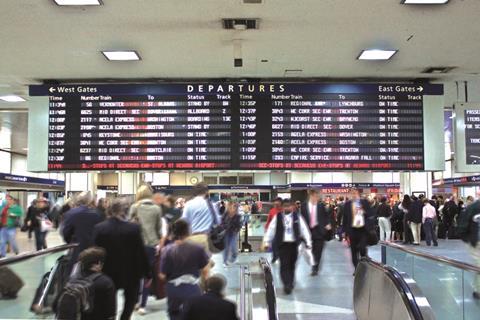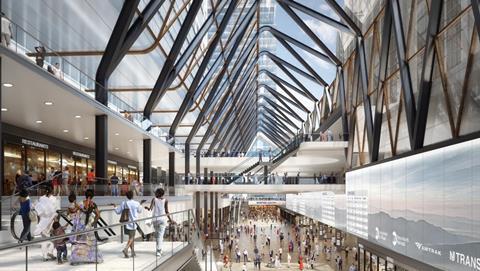USA: New York’s Metropolitan Transportation Authority and its partners have unveiled plans for the next stages of the redevelopment and expansion of New York Penn Station, following the opening of the Moynihan Train Hall at the start of this year.
Pressure to modernise Penn Station has grown over recent years as passenger volumes increased in the pre-pandemic period. This exposed the site’s limited capacity and confusing layout, which is exacerbated by the competing priorities of the three operators serving it — Amtrak, New Jersey Transit and MTA’s Long Island Rail Road. Added complications include the constraints imposed by the decision in the 1960s to build the Madison Square Garden sporting arena over the top of the station, limiting the space for expansion and access to natural light.
In recent years doubts have risen over the prospects for completion of the Gateway Programme to build a second set of tunnels under the Hudson River to increase rail capacity between New Jersey and New York. That project envisaged the construction of a further annexe, known as Penn South, to serve the additional tracks.

Year-long assessment
In a statement released on April 21, MTA said it had spent the past year working with Amtrak and NJ Transit to examine ‘a number of options for the reconstruction of existing Penn’, supported by FXCollaborative and WSP.
The parties have settled on two core options for improving the passenger handling capacity of the station, which share a number of common elements. These include increasing the amount of concourse space, unifying the station management functions across the different operators, adding more stairs, escalators and lifts to and from the platforms, and providing full accessibility in accordance with the Americans with Disabilities Act.
Two decks or one
Beyond this, the choice facing planners is whether to retain current layout of concourses on different levels, or remodel the passenger halls as a single deck.

The first approach would retain the two-level configuration while creating a central atrium and repurposing some of Amtrak’s space for use by NJ Transit customers. A ‘grand new entrance’ on 8th Avenue would be added and a ‘light-filled West Train Hall’ developed in the space currently occupied by Madison Square Garden’s 5 600-seat Hulu Theater. This venue would be acquired by the state in order to increase sightlines and enable better movement throughout the station.
The alternative envisages a single-level concourse, ‘eliminating all low ceiling heights and simplifying entry and exit routes from trains and the street level while also creating new large circulation areas bigger than the Great Hall of Grand Central Terminal’, MTA explained.

Approximately 40% of the existing upper level would be removed, ‘so that so that all the public concourses could be two or three storeys high, resulting in a more open, airy space throughout the station with better sightlines and more direct access to both tracks and platforms, and to station entrances’.
This option would also feature a spacious, light-filled Train Hall with new entrances on 33rd and 31st Streets near 7th Avenue. The design would include a multi-storey atrium built in the former taxiway between Madison Square Garden and 2 Penn Plaza, which has been closed for security reasons since September 11 2001. It would also see 33rd Street become a pedestrian-oriented shared space.
Next steps
MTA said it would work with the state and federal governments as well as rail industry partners to further refine the vision for Penn Station to become the Empire Complex, as set out by Governor Andrew Cuomo in his 2020 State of the State address.

‘MTA, Amtrak and NJ Transit will continue to work with the New York Congressional delegation and other state and federal partners to secure funding for the Gateway Programme and the related Penn Station reconstruction and expansion projects’, it explained. A development option would be confirmed following extensive public consultation, after which an Environmental Impact Statement could be prepared for Penn Expansion, alongside ‘other federally-required processes’.
Meanwhile, some commentators have pointed out that through-running of local services between NJ Transit and LIRR or Metro-North routes would avoid the need to build additional platform capacity at Penn by reducing the large number of trains that currently terminate in what is nominally a through station.


















